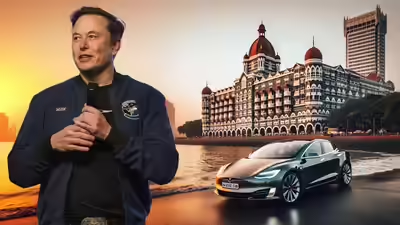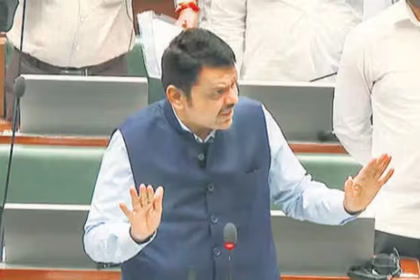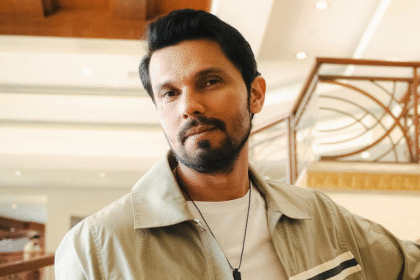Elon Musk’s Tesla to Launch First Showroom in Mumbai Next Week: EV Maker’s India Debut Begins
In a defining moment for both India’s automotive future and global electric vehicle ambitions, Tesla, led by Elon Musk, is officially setting up shop in Mumbai. The announcement that Tesla will open its first showroom in the country’s financial capital next week has sent ripples through the Indian auto industry, international business circles, and policy corridors alike. For a nation long dominated by internal combustion engines and slow-to-adapt policies, the arrival of the world’s most recognized electric vehicle brand represents not just a commercial milestone—it symbolizes a technological and environmental awakening.
Tesla’s entry into India has been long anticipated. Talks between Tesla executives and Indian government officials have spanned over half a decade, marred at times by disagreements on import duties, local manufacturing commitments, and infrastructure readiness. While enthusiasm among Indian consumers has never wavered, the logistics of creating a sustainable operating model in a country where EV adoption is still nascent presented real challenges. That, however, seems to be shifting—quickly and dramatically.
The decision to open Tesla’s first official showroom in Mumbai is both strategic and symbolic. Mumbai isn’t just the financial heart of the country; it is a city that embodies aspiration, ambition, and global outlook. By placing its first physical footprint in a city synonymous with scale and sophistication, Tesla is signaling its intent: this is not an experimental rollout. This is a serious, long-term commitment to the Indian market.
The showroom will not merely be a retail outlet. Sources suggest that Tesla plans to make the Mumbai space a full-fledged experience center, showcasing not only vehicles like the Model 3 and Model Y, but also the company’s software ecosystem, Autopilot interface, and possibly, its Powerwall energy storage solutions. Visitors are expected to get an immersive walkthrough of Tesla’s EV ecosystem—combining high-end design, AI-enabled driving technology, and energy sustainability into one seamless user journey.
More than just a retail presence, however, the Mumbai launch represents the beginning of a deeper integration into India’s EV infrastructure. Tesla has reportedly begun scouting locations across Maharashtra and Gujarat for manufacturing and assembly units. If Tesla’s standard expansion pattern holds true, the showroom will act as a beachhead for wider investments—starting with vehicle imports, followed by localized assembly, and eventually full-scale manufacturing.
This isn’t merely good news for Tesla fans or auto enthusiasts—it’s a massive vote of confidence in India’s EV policy roadmap. Over the last two years, the Indian government has taken notable steps to boost the EV sector: reducing GST on EVs, offering state-level subsidies, easing licensing norms for charging stations, and incentivizing domestic battery production. While challenges persist—particularly around charging infrastructure, raw material sourcing, and affordability—Tesla’s entry may catalyze faster progress across these fronts. When a brand with Tesla’s market weight and technological prowess enters a space, suppliers, competitors, and regulators take note.
For Indian automakers, this arrival is both an opportunity and a warning. The domestic EV scene, led by Tata Motors, Mahindra Electric, and emerging startups like Ather Energy and Ola Electric, has seen promising growth—but Tesla’s entry could significantly shift consumer expectations. Features like autonomous driving, over-the-air updates, and seamless connectivity, once considered futuristic luxuries, may quickly become new benchmarks. Competition will no longer be domestic; it will be global.
More broadly, Tesla’s physical presence in India could reframe the way Indian consumers view EVs. Until now, EVs in India have largely been positioned as economical, environmentally conscious alternatives to traditional vehicles. Tesla, however, redefines that narrative. It doesn’t just sell cars; it sells a lifestyle—an aspirational blend of performance, sustainability, and innovation. This brand positioning could accelerate EV acceptance, especially in premium and upper-middle-class segments that have remained cautious due to limited options or range anxiety.
But the road ahead won’t be without obstacles. India’s EV charging infrastructure is still in early development. Grid stability, land acquisition for supercharging stations, and inter-state coordination remain real bottlenecks. Moreover, pricing strategy will be crucial. Tesla vehicles are currently priced well above what the average Indian consumer can afford. Unless Tesla localizes its supply chain significantly, widespread adoption will be restricted to metro elites and corporate fleets.
Still, even in its current form, Tesla’s arrival is more than a product launch—it is a statement. A declaration that India is no longer on the periphery of global automotive innovation. With climate targets becoming more urgent, and public sentiment increasingly favoring sustainability, India stands at a critical junction—and Tesla seems ready to help define the path forward.
As the company prepares for its grand opening in Mumbai, eyes across the nation—and indeed, around the world—will be watching closely. Not just to see how many cars are sold, but to understand how Tesla plans to navigate a market as complex, dynamic, and promising as India.
For a company that has reshaped the global auto industry, Tesla’s timing in entering India is more than just market opportunism—it’s part of a calculated pivot toward emerging economies. After securing strongholds in North America, Europe, and China, Elon Musk’s electric empire is now steering toward the next frontier: India, the world’s most populous country and one of its fastest-growing auto markets.
Tesla’s global success has been defined not just by its vehicles, but by its ability to anticipate and adapt to market shifts. The U.S. and Europe are now maturing EV landscapes with high infrastructure penetration and regulatory support. China, Tesla’s second-largest market, has offered robust state-backed subsidies, but is also fiercely competitive with domestic players like BYD and NIO scaling at breakneck speeds. As Tesla looks beyond these saturated markets, India represents a compelling, if challenging, opportunity.
With a population exceeding 1.4 billion, a rapidly growing urban middle class, and rising environmental consciousness, India ticks all the right boxes on paper. Yet, until now, the country has remained largely on the sidelines of the EV revolution. Despite government-backed incentives and a declared target to electrify a significant portion of public and private transport, EVs still account for less than 2% of all passenger vehicle sales in India. Infrastructure is limited, and consumer trust is still in the process of being built.
So why is Tesla making its move now?
The answer lies in both timing and tectonics—economic, environmental, and technological. First, the Indian government has, in recent years, shown an increased willingness to accommodate Tesla’s conditions. Import duties have long been a sticking point—Tesla wanted them lowered to test the market through imported models before committing to manufacturing. Indian policymakers initially resisted, insisting on local production. But a middle path now appears to be forming: Tesla will begin with limited imports through its Mumbai showroom and parallelly explore local assembly and partnerships.
Second, India’s broader industrial strategy is undergoing a shift. Under the Production-Linked Incentive (PLI) scheme, the government is aggressively courting advanced manufacturing—especially in EV components, battery technology, and semiconductor fabrication. Tesla’s entry aligns perfectly with this vision. If Tesla brings even a fraction of its supply chain into India, it would catalyze a ripple effect—boosting domestic tech capabilities, generating high-skill jobs, and attracting ancillary industries.
Third, from an environmental standpoint, India is at a tipping point. With pollution levels choking cities and oil imports burdening the economy, electrification is no longer just a green dream—it’s a geopolitical and economic necessity. Tesla’s brand of clean, high-performance mobility could help shape public perception, especially among early adopters and urban youth, toward a new definition of aspirational transportation.
It’s also worth noting that India has something Tesla now needs: scale. After a decade of meteoric growth, Tesla’s global sales are facing plateau-like symptoms in some mature markets. To sustain its trillion-dollar valuation and appease increasingly restless shareholders, Tesla must demonstrate expansion into massive untapped markets. India, with its expected vehicle population explosion over the next 15 years, offers that growth runway.
Yet, Tesla’s ambitions here are not without friction. India is a complex market with diverse consumer behavior, regulatory red tape, and infrastructural bottlenecks. Unlike the United States or even China, Indian buyers are intensely value-driven. Brand loyalty exists, but price sensitivity dominates. Even Tesla’s “affordable” Model 3, once it lands in India post-import duties, could retail upward of ₹50 lakh (around $60,000)—a price point far beyond reach for most Indian consumers. That limits Tesla’s market to ultra-high-net-worth individuals, corporates, and luxury enthusiasts, at least in the initial phase.
But this is exactly how Tesla entered China. And like in China, Tesla seems to be following a multi-stage strategy: test the market through elite offerings, gauge infrastructure readiness, and slowly build the business case for local production. If India offers the right mix of incentives, land, and supply chain efficiency, Tesla could soon be manufacturing in Maharashtra, Gujarat, or Tamil Nadu—regions already hosting massive automotive industrial clusters.
Tesla’s India entry, therefore, isn’t about selling a few hundred premium vehicles—it’s about laying the foundation for long-term influence. Influence over EV design norms. Influence over public infrastructure development. And influence over the way Indian consumers view technology, sustainability, and innovation in mobility.
As Musk himself has said in the past, “We don’t make slow cars. We make clean, fast, intelligent machines.” India, a nation of fast-moving aspirations, may finally be ready for such machines.
As Tesla prepares to open its first showroom in Mumbai, speculation is rising around one key question: Who will buy the first Teslas in India? While the showroom will undoubtedly attract crowds of curious onlookers, the company’s early success will hinge on a very specific segment of the Indian population—tech-savvy, environmentally aware, financially capable, and brand-conscious urban consumers.
Tesla is entering India at the top of the market pyramid. With import duties pushing the price of even the entry-level Model 3 beyond ₹50 lakh, Tesla is not targeting the average Indian car buyer—at least not yet. Instead, its immediate focus will be on ultra-high-net-worth individuals, affluent professionals in metro cities, corporate executives, and a growing class of startup founders and digital entrepreneurs who already see electric vehicles as a mark of lifestyle and status.
This demographic is not insignificant. Mumbai, Delhi-NCR, Bengaluru, Hyderabad, and Pune collectively house a growing base of EV enthusiasts and early adopters—people who are already familiar with global trends, have likely experienced Teslas abroad, and are eager to bring that experience home. For many in this tier, buying a Tesla is not just about transport—it’s about identity. It is a reflection of values: climate consciousness, cutting-edge technology, and a desire to lead, not follow.
Tesla has always excelled at selling a narrative as much as a product. And in India, that narrative will resonate with aspirational consumers who view ownership of a Tesla as symbolic of being part of the future. These early buyers are not just looking for mobility—they’re seeking autonomy, elegance, and innovation. They understand the value of features like Autopilot, software updates, and a global ecosystem that syncs seamlessly with smart homes and devices.
In fact, Tesla may not even need to engage in aggressive marketing during this phase. Its brand power precedes it. The Indian luxury automobile buyer has already been shifting toward EVs. Brands like Mercedes-Benz, BMW, Jaguar, and Audi have launched electric models and seen considerable success in urban markets. However, Tesla remains in a class of its own—not just as a carmaker, but as a tech company. For customers in India who already own luxury petrol or diesel vehicles, Tesla offers something novel: not just prestige, but purpose.
Still, this honeymoon phase will come with its own set of challenges. Indian buyers, even in premium segments, are highly service-conscious. With expectations shaped by the white-glove treatment from brands like Mercedes and BMW, Tesla will need to quickly establish robust after-sales infrastructure, including service centers, maintenance logistics, and customer care hotlines. Its direct-to-customer model, while efficient in Western markets, must be localized to ensure trust and reliability in India.
Then there’s the practical challenge of charging. While home charging will be feasible for many of Tesla’s first customers who live in gated communities or standalone properties, public charging infrastructure in India is still limited. Tesla will need to roll out its Supercharger network rapidly—or partner with existing EV charging platforms like Tata Power, ChargeZone, or Statiq—to reassure buyers that long-distance travel won’t be a logistical nightmare.
Another factor that may influence early buyers is the software ecosystem. Tesla’s unique selling proposition has always included its infotainment system, over-the-air updates, and AI-driven driving experience. But India’s regulatory environment may slow or restrict some of these capabilities. For instance, Autopilot and Full Self-Driving (FSD) packages—major differentiators in the U.S.—may not be approved for Indian roads in the near future. Without those, Tesla may struggle to distinguish itself from other premium EVs on functionality alone.
Yet, despite these roadblocks, the initial buzz around Tesla’s showroom launch in Mumbai suggests that demand won’t be a problem—at least not in the early stages. Pre-launch bookings, social media activity, and luxury auto dealership chatter indicate that there is a long waiting list of buyers already preparing to be Tesla’s first Indian drivers.
For them, this isn’t just a transaction. It’s an entry into a global community. A seat at the table of 21st-century innovation. And perhaps most importantly, a step away from fossil-fuel dependence.
As Tesla prepares to deliver its first batch of vehicles in India, it will be writing more than invoices—it will be shaping expectations. If it succeeds in delighting its early customers, word-of-mouth alone could be enough to turn India from a cautious observer into an enthusiastic adopter.
As Tesla prepares to deliver its first electric vehicles to Indian customers, the focus now turns to what comes next—not just for the company’s showroom presence, but for the broader infrastructure ecosystem that Tesla must construct around its operations. Because Tesla, unlike traditional carmakers, doesn’t just sell cars. It sells a system: a tightly integrated model of vehicles, charging stations, service networks, energy storage, and software. Without this supporting cast, even the most advanced vehicle becomes just a machine with limitations.
In India, that support system does not yet exist—not at the level Tesla requires. The company will have to build it from the ground up or forge strategic alliances to accelerate deployment. Either way, the infrastructure challenge is the most formidable barrier between Tesla’s vision and widespread adoption in India.
At the center of that infrastructure is charging. Tesla’s global success has, in part, been driven by the strength of its Supercharger network, which allows Tesla owners to travel long distances without the fear of running out of charge. In the United States and Europe, Tesla has installed thousands of Supercharger stations with ultra-fast DC chargers that can recharge up to 80% of a battery in under 30 minutes. In China, Tesla has built the largest foreign-owned charging network in the country. Now, India represents a blank slate—and a massive challenge.
India currently has fewer than 10,000 public EV charging stations nationwide, the majority of which are concentrated in metropolitan regions like Delhi NCR, Mumbai, Pune, Bengaluru, and Hyderabad. Even within those cities, coverage is patchy and inconsistent. Moreover, charging standards in India are not yet fully harmonized, meaning Tesla will either have to adapt its Supercharger connectors to Indian norms or create proprietary stations that serve only Tesla vehicles—a move that could isolate non-Tesla EV owners and stifle cooperation with the broader EV ecosystem.
The company has already taken early steps. Reports suggest that Tesla has begun evaluating high-footfall urban and highway locations in Maharashtra and Gujarat to deploy its first charging stations. These are likely to include both destination chargers (installed in hotels, malls, and workplaces) and urban Superchargers—with scalable deployment depending on demand and regulatory permissions. However, building a nationwide charging network in a country as vast and diverse as India will require significant investment, government cooperation, and creative problem-solving.
This is where partnerships will play a critical role. Tesla may look to partner with India’s emerging EV charging providers such as Tata Power EZ Charge, Reliance BP Mobility, Ather Grid, or Fortum India. These companies already have a head start on urban EV charging and could offer Tesla a quicker route to scale by sharing infrastructure, land access, and power management technologies. Moreover, Tesla may also seek collaboration with state electricity boards and central agencies to facilitate land acquisition and grid integration—particularly in high-priority corridors like the Delhi-Mumbai expressway and the Pune-Bengaluru tech route.
Beyond charging, servicing and after-sales support represent another critical component. Tesla’s traditional model of over-the-air (OTA) software updates and minimal mechanical intervention may work in theory—but India’s roads, weather conditions, and user behavior pose unique challenges. From pothole damage to monsoon-induced wear and tear, Indian vehicle owners are accustomed to robust servicing and hands-on customer care. Tesla will need to establish Service Centers in each major metro, staffed with trained technicians, along with a logistics supply chain for spare parts and replacements. Without this, even minor breakdowns could turn into public relations disasters.
The third infrastructure pillar is energy management. Tesla is not just a car company; it is also an energy company. Its Powerwall home battery systems and solar technologies are central to its long-term strategy. In India, this could dovetail with the government’s aggressive push toward solar energy and grid decentralization. While the Powerwall has not yet launched in India, Tesla could position itself as a premium solution for residential solar-plus-storage—especially in off-grid or grid-stressed regions.
However, here again, pricing and localization are critical. Indian consumers, while environmentally conscious, remain highly cost-sensitive. Unless Tesla is able to manufacture or assemble its energy products in India at scale, uptake will remain restricted to niche markets. That said, India’s own solar sector is one of the world’s fastest-growing, and partnerships with Indian solar firms could enable Tesla to enter this market in a meaningful way.
Tesla will also need to engage closely with regulatory bodies—including the Bureau of Indian Standards (BIS), Central Electricity Authority (CEA), and the Ministry of Heavy Industries—to ensure compliance with domestic norms around safety, energy distribution, and emissions tracking. Unlike the U.S., where Tesla often acts as a disruptor to regulations, in India it may need to cooperate rather than challenge in order to win trust.
Despite these hurdles, the timing is in Tesla’s favor. The Indian government is more open than ever to innovation in clean mobility. State governments are offering incentives on land, power, and taxes for EV manufacturers. And the climate crisis is placing increasing pressure on all nations—including India—to transition to clean energy and transport. If Tesla can position itself not just as a premium automaker, but as a clean-tech partner in India’s energy transformation, the long-term opportunities are enormous.
Ultimately, Tesla’s entry into India will succeed not on the strength of its brand alone, but on the resilience and scale of the infrastructure it builds. Cars will get people through the door. But charging stations, service centers, and energy solutions will determine whether they stay—and whether Tesla becomes a household name in India’s electric future.
Also Read : 120 Lives Lost: Intense Scrutiny on Texas Flood Response Raises Alarming Questions








